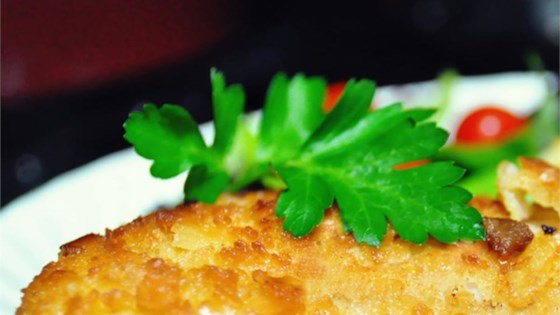Trying to find recipes Best Fried Walleye, each of our site provides recipes Best Fried Walleye that a person need Listed here are the dishes Best Fried Walleye of which you need
 |
| Best Fried Walleye |
"This is the recipe my dad has been using for 25 years. It's light and clean-tasting because there's no sense in masking the naturally delicious flavor of such an awesome Canadian delicacy! No tartar sauce needed!"
Ingredients :
- 4 walleye fillets
- 2 eggs, beaten
- 1/2 cup all-purpose flour
- 1/2 teaspoon garlic powder
- 1 pinch salt (optional)
- 1/2 teaspoon ground black pepper
- 2 cups crushed saltine crackers
- vegetable oil for frying
- 1 lemon, cut into wedges
Instructions :
| Prep : 30M | Cook : 4M | Ready in : 45M |
|---|
- Check the fillets to ensure all bones and skin have been removed. Cut the fillets into manageable pieces, if necessary.
- Place the beaten eggs a bowl and set aside. Combine the flour, garlic powder, salt, and pepper in another bowl. Pour the cracker crumbs into a third bowl.
- Heat the oil in a deep-fryer or large cast-iron skillet over medium-high heat to 375 degrees F (190 degrees C).
- Dip the fillets into the flour mixture, then the eggs, and then the cracker crumbs and set fillets aside on a plate. Test the oil: it will crackle and pop when a cracker crumb is dropped into it. Carefully lower 2 fillets into the hot oil. Cook until browned, about 3 minutes per side, using tongs to turn the fillets. Transfer to a paper towel-lined plate and repeat with remaining fillets. Serve with fresh lemon wedges.
Notes :
- To crush the saltines, place the crackers in a resealable gallon-size plastic freezer bag and roll with a rolling pin (or whatever you've got) until they are a fine "bread crumb" consistency.
- The nutrition data for this recipe includes the full amount of the breading ingredients. The actual amount of the breading consumed will vary. We have determined the nutritional value of oil for frying based on a retention value of 10% after cooking. The exact amount will vary depending on cooking time and temperature, ingredient density, and the specific type of oil used.
I want to thank visiting our blog. no longer forget to bookmark each of our site, if our internet site provides the best dishes.

Komentar
Posting Komentar